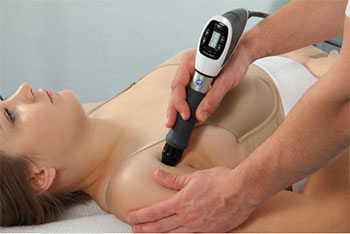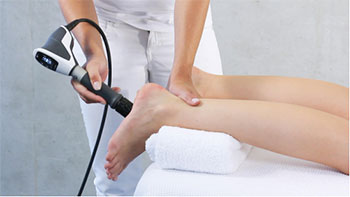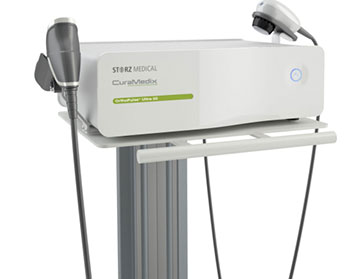What is EPAT?
Extracorporeal Pulse Activation Technology (EPAT®) is an advanced and highly effective non-invasive treatment method cleared by the FDA. This proprietary technology is based on a unique set of pressure waves that stimulate the metabolism, enhance blood circulation and accelerate the healing process.
The procedure consists of applying a unique and proprietary set of acoustic pressure (sound) waves that are generated outside the human body to the treatment area via the device applicator. On behalf of the knowledge and experience gathered to date, these acoustic pressure waves do not cause any clinically relevant side effects.
High-intensity acoustic pressure waves, often called shock waves (ESWT or ESWL), have been used in medicine for more than twenty years. This procedure is considered the “Gold Standard” in urology for the fragmentation of kidney stones.
During the last few years, acoustic pressure waves (EPAT®) have been used in areas of orthopedics, traumatology, rheumatology, pain management, and rehabilitation with great success.
How does it work?
A unique set of acoustic pressure waves (EPAT®) will be applied to the target region identified as the pain generator in your specific case.
The EPAT®treatment will stimulate a cellular expression and improve blood and lymph circulation and thus accelerate the healing response and tissue regeneration. Moreover, faster blood and lymph circulation may also stimulate collagen production and fibrotic tissue breakdown in the treatment regions. As a result, we expect to see improvements in both pain reduction and functionality.
The innovative, non-invasive treatment is intended to treat the root cause of your injury using a proprietary set of unique acoustic pressure waves to achieve the best possible clinical outcome and therapeutic effects.
Possible Risks of EPAT®Treatment:
The non-invasive Extracorporeal Pulse Activation Treatment (EPAT®) has virtually no risks or side effects. In some cases, patients may experience some minor discomfort during and immediately following the procedure. Side effects from EPAT may include minor skin bruising, reddening, and swelling around the treated area.
Preparation:
Your treatment provider will ensure that you are positioned for treatment in such a way that the applicator can be coupled to the target region. Ultrasound gel will be applied before the applicator is positioned on your skin surface.
The number of pulses to be applied depends on your specific diagnosis. The energy can be gradually increased based on your specific sensitivity levels. The treatment provider will then "scan" the treatment region with the applicator.
Procedure:
Each treatment session will take approximately 5-10 minutes. One treatment per week for a total of 3-5 treatment sessions will take place over a 2-4 week period. During this time, it is necessary to discontinue use of any/all NSAIDS and drink plenty of water before and after the treatment.
Contraindications:
The safety and effectiveness of the EPAT procedure has not been determined on people with the following health conditions. Your doctor will provide you with information about how these and other conditions might affect the decision to perform EPAT procedures.
- Serious cardiovascular disorders
- Implanted cardiac pacemakers that are not approved for pressure wave treatment
- Malignancies
- Pregnancy, breast-feeding
- Phlebitis or deep venous thrombosis in leg






